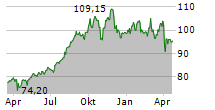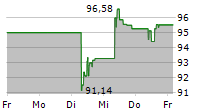
NEW YORK CITY, NY / ACCESSWIRE / November 27, 2024 / Buying too much life insurance can cause you to pay more on monthly life insurance premiums than you need. However, buying too little can financially strain your loved ones when the death benefit runs out.
While it's impossible to calculate your future needs perfectly, several strategies can help you estimate your needs to ensure your loved ones have enough coverage without you overpaying. This article explores a few methods for calculating your life insurance coverage, each varying in complexity and accuracy.
1. The 10X Rule
The 10X income method is the simplest way to estimate your life insurance needs. It involves multiplying your current income by 10 to determine your total coverage needs.
For example, if you earn $50,000 per year, you'd get a life insurance policy with a $500,000 death benefit.
Some adjust this to be a 15x rule, multiplying their annual income by 15 instead of 10. While this results in a larger death benefit, it may work if you want to provide support for longer or account for periods of higher inflation.
2. DIME Formula
The DIME formula factors your debts, income, mortgage, and education costs into your coverage needs.
Here's how to calculate your life insurance needs with the DIME formula:
Multiply your annual income by the number of years you want to provide support
Add up all debts, including your remaining mortgage balance
Estimate each dependent's education costs
Add the numbers from 1, 2, and 3.
For example, let's say you earn $50,000 annually and want to provide 10 years of support for your loved ones. Multiply $50,000 by 10 years to get $500,000. This is your "base" number.
Additionally, you have $10,000 in debt and $100,000 left on your mortgage balance. You estimate your child's education costs will total $40,000.
The sum of your debts, mortgage, and education costs is $150,000. Adding this to your $500,000 base number brings you to a total coverage need of $650,000.
The DIME formula is more complex and requires some estimation. However, it leads to purchasing extra coverage that can create greater financial security.
3. Income Replacement Plus Cushion
The Income Replacement Plus Cushion strategy assumes your loved ones won't need to spend the full death benefit upon your death to replace your income.
Instead, they invest the proceeds into conservative investments to preserve the death benefit and use the returns to cover their living expenses. Then, when they no longer need it to cover expenses, they can tap into it for larger goals, such as education or buying a new home.
Calculating your needs with this method involves dividing your income by a conservative estimated rate of return to arrive at your death benefit. For example, imagine you earn $50,000 per year and estimate a 4% average rate of return. Dividing $50,000 by 4% arrives at a death benefit of $1,250,000.
This method may work if your spouse works and earns a decent portion of the household income since they may be able to live on an invested death benefit's earnings. It can also work if your loved ones will receive a substantial estate from you, such as significant investment accounts and retirement funds.
4. Obligations-Earnings Method
The Obligations-Earnings calculates the difference between your future obligations (including your income) and assets to find your needs. Your obligations will outweigh your assets, meaning the difference is the estimated death benefit you need.
This method is the most complex since it accounts for several financial matters, but it can also more accurately estimate your coverage needs.
First, multiply your annual salary by the number of years you want to provide support. Add this amount to the following:
Mortgage balance
Other debts
Future goals and needs, such as, but not limited to, education
Next, subtract your liquid assets from the above sum. Liquid assets include:
Bank accounts (savings, checking)
Current life insurance, if any
Retirement accounts, if accessible to heirs immediately after inheriting
The result represents your estimated life insurance coverage needs.
Determine Your Life Insurance Needs
There are many ways to calculate your life insurance needs, each increasing in complexity but also accounting for more factors to boost accuracy.
Ultimately, using a life insurance calculator may be the easiest way to estimate your coverage needs. These online tools collect much of the information the Obligations-Earnings Method uses but it handles the math for you. This can help you get enough coverage to provide for your loved ones without overpaying for unneeded coverage.
Content within this article is provided for general informational purposes and is not provided as tax, legal, health, or financial advice for any person or for any specific situation. Employers, employees, and other individuals should contact their own advisers about their situations. For complete details, including availability and costs of Aflac insurance, please contact your local Aflac agent.
Aflac coverage is underwritten by American Family Life Assurance Company of Columbus. In New York, Aflac coverage is underwritten by American Family Life Assurance Company of New York.
Aflac life plans - B60000 series: In Arkansas, Idaho, Oklahoma & Virginia, Policies: ICC18B60C10, ICC18B60100, ICC18B60200, ICC18B60300, & ICC18B60400. Not available in Delaware. Q60000 series/Whole: In Arkansas & Delaware, Policy Q60100M. In Idaho, Policy Q60100MID. In Oklahoma, Policy Q60100MOK. Not available in Virginia. Q60000 series/Term: In Delaware, Policies Q60200CM. In Arkansas, Idaho, Oklahoma, Policies ICC18Q60200C, ICC18Q60300C, ICC18Q60400C. Not available in Virginia.
Aflac Final Expense insurance coverage is underwritten by Tier One Insurance Company, a subsidiary of Aflac Incorporated and is administered by Aetna Life Insurance Company. Tier One Insurance Company is part of the Aflac family of insurers. In California, Tier One Insurance Company does business as Tier One Life Insurance Company (Tier One NAIC 92908).
In AR, DE, ID, OK and VA: Policies ICC21-AFLLBL21 and ICC21-AFLRPL21; and Riders ICC21-AFLABR22, ICC21-AFLADB22, and ICC21-AFLCDR22. Aflac Final Expense policies are not available in New York.
Coverage may not be available in all states, including but not limited to DE, ID, NJ, NM, NY or VA. Benefits/premium rates may vary based on state and plan levels. Optional riders may be available at an additional cost. Policies and riders may also contain a waiting period. Refer to the exact policy and rider forms for benefit details, definitions, limitations, and exclusions.
Aflac WWHQ | Tier One | 1932 Wynnton Road | Columbus, GA 31999
Aflac New York | 22 Corporate Woods Boulevard, Suite 2 | Albany, NY 12211
Z2400915 EXP 10/25
CONTACT:
Senior PR & Corporate Communications
Contact: Angie Blackmar, 706-392-2097 or ABlackmar2@aflac.com
SOURCE: Aflac
View the original press release on accesswire.com




